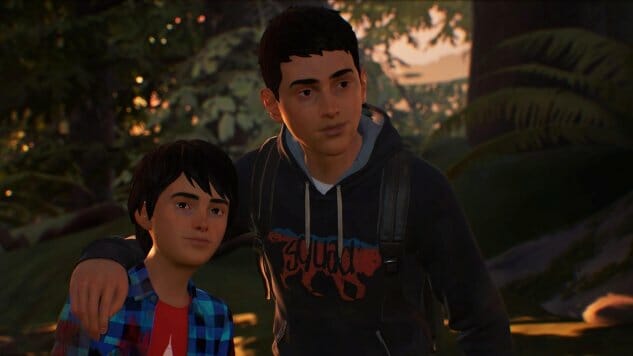Life Is Strange 2 Tackles Real-Life Issues Head On

Three years ago, Life is Strange, to put it in cliche but metaphorical terms, took the gaming world by storm, revisiting the concept of “the butterfly effect” and combining it with strong character writing and an innovative choice-driven narrative delivery system to deliver a breath of fresh air in digital format. This week marks the launch of the official sequel, Life is Strange 2, raising the question if Square Enix and Dontnod Entertainment can strike lightning twice and live up to their own legacy.
Life is Strange 2 introduces us to brothers Sean and Daniel Diaz, two young boys living in West Seattle with their father Esteban. Following a confrontation with a neighbor, Esteban is shot and killed by a police officer, forcing Sean and Daniel to flee south through the Washington state mountains and fend for themselves. Along the way they encounter the threat of hostile wildlife and the equal threat of racist locals, while bonding as brothers and coming to terms with their father’s death—as well as what may be Daniel’s growing supernatural powers.
There’s a lot I like about Life is Strange that returns in Life is Strange 2, particularly the setting and character writing. The attention to detail is marvelous; it is impressive how well Dontnod have been able to recreate the feeling of key Pacific Northwest areas and scenery. One of the most notable things about the original game, outside of its beauty and its interesting rewind mechanic, was its lead characters, Max and Chloe. While I’m sad to see that Life is Strange 2 doesn’t have strong female leads, the story of Sean and Daniel feels equally compelling and important. The first chapter does a great job of establishing the momentum of the game’s narrative arc. The Diaz boys are very easy to root for, and the pain Sean feels as he must protect his younger brother from the truth of their father’s absence is palpable. The more you participate in the bonding experience of being an older brother, the closer the events seem to hit home. By the end of the chapter, I felt genuine fear for the boys and, while I usually don’t waste time speculating on how a piece of fiction will end, I found myself hoping for the best.